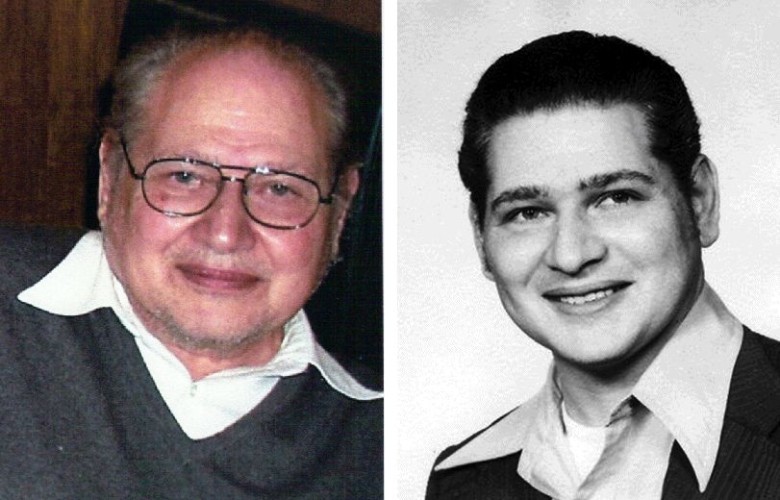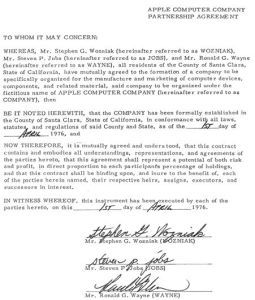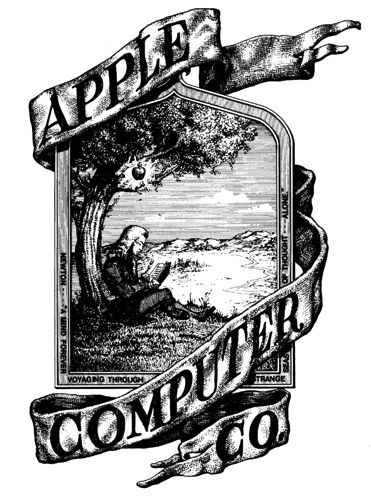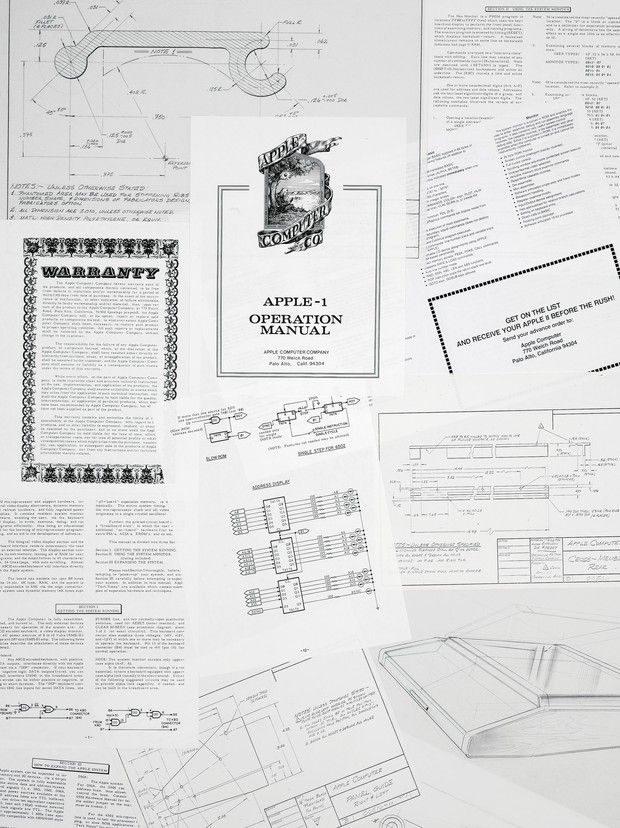In a universe where things worked out a bit differently, Ronald Wayne would be a billionaire.
When Apple was incorporated on April 2, 1976, Wayne was named alongside Steve Jobs and Steve Wozniak as one of three founders. Wayne owned a 10 percent stake in the company.
However, just 12 days after Apple started up — feeling out of his depth because he “was standing in the shadow of intellectual giants” — Wayne threw in the towel and sold his shares for just $800.
“I was 40 and these kids were in their 20s,” Wayne told Cult of Mac. “They were whirlwinds — it was like having a tiger by the tail. If I had stayed with Apple I probably would have wound up the richest man in the cemetery.”
Ron Wayne: Apple’s unknown co-founder
In Apple lore, Ron Wayne is the man who won the lottery but lost the ticket. He’s Cupertino’s version of Stuart Sutcliffe or Pete Best, the musicians who played with The Beatles but left before the band made it big. Unlike Wozniak and Jobs, who became multimillionaires at a young age, Wayne’s finances have been “in a hole for the last 40 years.”
Now he’s selling his Apple archive — which includes original proofs of the Apple-1 manual he created and unused designs for a proposed Apple II case, among other documents — in a Christie’s auction later this month. Expected to go for between $30,000 and $50,000, the archive will give its new owner a tangible piece of Apple’s early existence.
And the sale will help Wayne, who claims he does not regret his decision to leave Apple, pay his bills.

Today, Wayne resides in a $150,000 house in Pahrump, Nevada, an unincorporated town 16 miles west of Las Vegas. Aged 80, he lives on his Social Security checks and money made selling rare coins and stamps over the Internet.
I ask if his current finances are healthy. “Let me put it to you this way — this auction will really help,” he says.
Steve Wozniak sees Wayne as the kind of guy anybody would like, a rational man unlikely to second-guess himself.
“He would never feel badly or have regret about his decisions, since they all had a logical derivation at the time,” Wozniak tells Cult of Mac. “I am a lot like that and seeing Ron reinforced much of this in myself.”
Ron Wayne’s early days
Unlike both Jobs and Wozniak — baby boomers born in Silicon Valley during the 1950s — Wayne was born in 1934, in Cleveland, Ohio. He trained as a technical draftsman at New York’s School of Industrial Arts, then left to head west to California. He arrived there in 1956, the year after Jobs was born.
Wayne’s first stab at business was a company selling slot machines. It went bust.
“I discovered very quickly that I had no business being in business,” he says. “I was far better working in engineering.”
Even though he had established a corporation, which gave him bankruptcy protection, he felt compelled to pay off everyone who had worked for him or otherwise put their faith in him.
“I bought back everyone’s shares at exactly what they’d paid for them,” he says. “My attitude was, ‘They didn’t cause the problem, I did.’ I knew that every time I shaved I had to look myself in the mirror, and I didn’t want to be responsible for anyone else being hard up.”
Meeting Jobs and Wozniak at Atari
Wayne wound up working at Atari in the 1970s, where he befriended Jobs and Wozniak. “I admired Ron for his experiences and tales of being with startups,” says Wozniak. “Most of all I was impressed, as a young person might be, by [his] worldliness. He was well-educated on many topics of life and was skilled and creative at many as well.”
Wayne describes Wozniak as “the most gracious man I’ve ever met in my life. His personality was contagious.”
Jobs, on the other hand, he found tougher to deal with.
“He was a very focused fellow,” Wayne says, picking his words carefully. “You never wanted to be between him and where he wanted to go, or you’d find footprints on your forehead. To put it simply, if you had your choice between Steve Jobs and an ice cube, you’d nuzzle up to the ice cube for warmth. But that’s what it took for him to turn Apple into what it became.”
Prior to starting Apple, Jobs mentioned to Wayne that he “had access to” $50,000. Jobs asked if his older friend was interested in getting back into the slot machine business. Wayne replied that this was the quickest way on earth to lose $50,000, and Jobs never brought it up again.
Ron Wayne, the unknown Apple co-founder
Nonetheless, Jobs kept Wayne in mind and invited him to join Apple as a c0-founder. One of Wayne’s earliest tasks was drawing up the legal contract that described the roles he, Jobs and Wozniak would play in the company.
“He could sit down at a typewriter right in front of us and type a legal partnership agreement out of his head,” Wozniak says, amazed.
According to the first contract, Wozniak was to be in charge of general and major responsibility for electrical engineering, Jobs was responsible for electrical engineering and marketing, and Wayne would oversee mechanical engineering and documentation. The latter was a reference to a clever documentation system Wayne had worked out while at Atari.
The original Apple logo

Image: Ron Wayne
Wayne also drew Apple’s first logo.
Mimicking the style of a Victorian woodcut, the logo depicted Sir Isaac Newton sitting beneath a tree with a solitary apple dangling over his head. Around the border ran a quotation from William Wordsworth’s The Prelude: “A mind forever wandering through strange seas of thought, alone.”
Less than a year later, the company replaced it with the iconic Apple logo designed by Rob Janoff.
In exchange for their work, Jobs and Wozniak took 45 percent each of Apple’s ownership. Wayne held the remaining 10 percent.
Wayne later cashed in his shares for $800, and eventually received an additional $1,500 to seal the deal.
“Nobody could have anticipated how big Apple would become,” Wayne says.
Wozniak says he was sad to see his friend go. “Never once did Steve Jobs or myself utter anything negative about Ron,” he says. “We were surprised when he decided to forego Apple.”
The years after Apple
As the movie The Social Network details, the departure of early founders from highly profitable companies can result, at best, in ruined friendships. At worst, such splits can lead to ongoing lawsuits. Neither of those happened in the case of Ron Wayne.
Jobs and Wozniak took Apple public in December 1980. Wayne, meanwhile, went to work for a small engineering company called LDF Semiconductors.
He didn’t lose touch with either Woz or Jobs, however. Both were fond of their former partner, and over the years they met up on several occasions.
In 2000, Jobs invited Wayne to attend a presentation of new Macs in San Francisco. He received first-class plane tickets, and Jobs’ chauffeur met him at the airport. Apple put up Wayne in a luxury room at the luxurious Mark Hopkins Hotel in San Francisco.
After the conference, Jobs, Wozniak and Wayne ate a long lunch at Apple’s cafeteria and reminisced about old times.
Ron Wayne’s only regret
The only part of the Apple experience Wayne says he truly regrets is what happened to the original Apple contract he created.
Not long after his lunch with Jobs and Woz, he was scouring a newspaper and ran across an ad placed by an autograph dealer. “I had this Apple contract sitting in my filing cabinet, covered in dust and cobwebs, and I thought, ‘What do I need to hold onto that for?’” he says. Wayne sold the contract to the autograph collector for $500. In 2011, the contract sold at auction for $1.6 million.
“In that, you have the story of my life,” Wayne says.

Image: Apple
As my interview with Wayne comes to a close, I again bring up his feelings about parting ways with Apple so soon. Given the way founder shares are inevitably diluted over time, it is difficult to establish exactly how much Wayne lost out on — but it’s a lot. In late 2010, the figure was estimated at $2.6 billion. Today, with Apple having just broken the $700 billion market cap, his stake would be worth substantially more.
Ron Wayne could have been a billionaire
He illustrates his perspective with one last anecdote. Ten years ago, at the age of 70, Wayne says he was robbed of his life savings. He was living in Florida at the time, and he kept 145 ounces of gold and $3,000 in silver coins in a strongbox in his house.
“The safe was broken into, the money was stolen, and I never did recover what I had lost,” he says. “I had to sell my house to recover.”
Well past retirement age, he downsized and moved to a much smaller house in cheaper Pahrump, where he lives now. All his friends were amazed that he somehow took this episode in his stride and didn’t go “screaming up the walls.”
“The reason I didn’t is very simple,” Wayne says. “Should I make myself sick over the whole thing, in addition to everything else that’s going on? It didn’t make any sense. Just pick yourself up and move on. I didn’t want to waste my tomorrows bemoaning my yesterdays. Does this mean I’m unemotional and don’t feel the pain? Of course not. But I handle it by going on to the next thing. That’s all any of us can do.”
Ron Wayne’s auction takes place December 11. Details can be found here. Also being sold at the same auction is a rare working model of an Apple-1.


